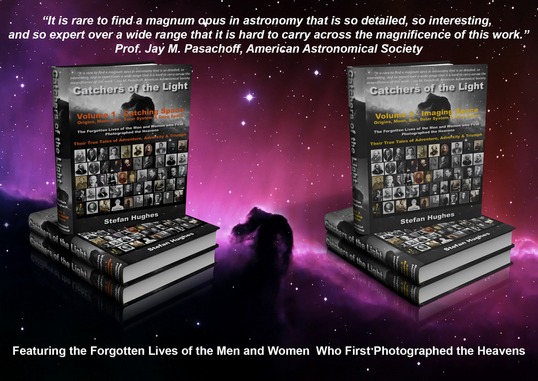'The Medical Man'

Born: 4th August [or 4th May] 1816, Bath, Somerset, England
Died: 11th May 1902, Portswood, near Southampton, Hampshire, England
In 1871, Richard Leach Maddox first published the use of Gelatino-Bromide to the create Dry Photographic Plates. It was this process which began the next revolution in Astrophotography. Its increased sensitivity over that of the Collodion process meant that images of Deep Space Objects (DSOs) could be obtained for the very first time, by pioneers such as Henry Draper, Isaac Roberts, William Edward Wilson, James Edward Keeler and others. It was later found out that many of these objects lie at distances millions of light years beyond the boundaries of our own insignificant ‘Milky Way’ star system.
During the whole history of Astrophotography, only three chemically based photographic processes have ever been used to any degree – the Daguerreotype, the Wet Collodion and the Gelatino-Bromide. Each in turn has spurred the development of astronomical photography forward and enabled astronomers to image fainter and more distant objects in space. Of the three the Gelatino-Bromide process was by far the most important of them all. Only the invention in 1969 of the CCD (Charge Coupled Device) had a greater impact on the use of photography for astronomical research.
On the 30th of September 1880 the New York Doctor, Henry Draper using a Gelatino-Bromide ‘Dry Plate’ imaged the ‘Great Orion Nebula’ (M42). This was the first photograph of any Deep Space Object (DSO) ever taken. It marked one of the great milestones in Astrophotography.
The earliest published account of the use of gelatine and silver bromide in photography was a paper published in the 8th September 1871 Issue of the British Journal of Photography, by Dr. Richard Leach Maddox (1816-1902), the son of a Tea Dealer from Bath, Somerset, England.
He later wrote modestly of his invention in a letter to the photographer William Jerome Harrison (1845-1908):
"…The world has been benefited, and I have been honoured with a gold medal and diploma by the Jurors’ Committee of the Inventions Exhibition. Do not for one moment suppose I ignore the work of other hands perfecting the gelatino-bromide process, and thus giving it its worldwide value in all departments of photography, especially that far reaching one of its adaptation to astronomical research. I am only too thankful to feel that I have been merely the stepping-stone upon which others have safely put their feet…"
Do not be fooled by this modesty, we as Astrophotographers owe much to Richard Leach Maddox, of whom remarkably little is known. Let us now tell his story and that of the Gelatino-Bromide process.
To read more on his life and work read the eBook chapter on Richard Leach Maddox or buy the Book 'Catchers of the Light'.

'Dry' Plate Photograph of the Spiral Galaxy M81 in Ursa Major, James E. Keeler, 1898

Buy the eBook or Printed Book at the 'Catchers of the Light' shop.